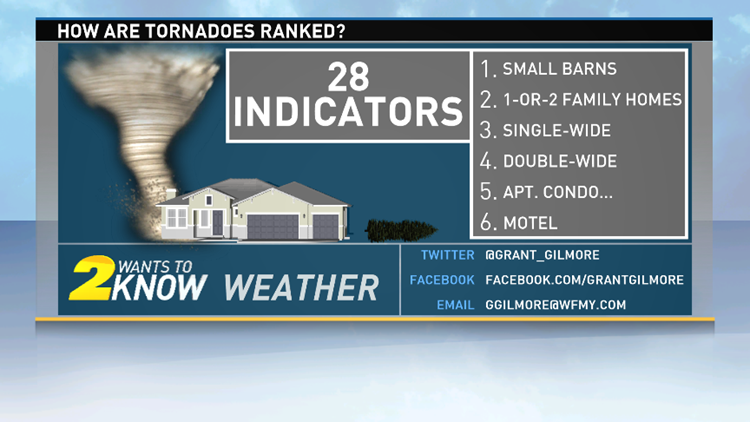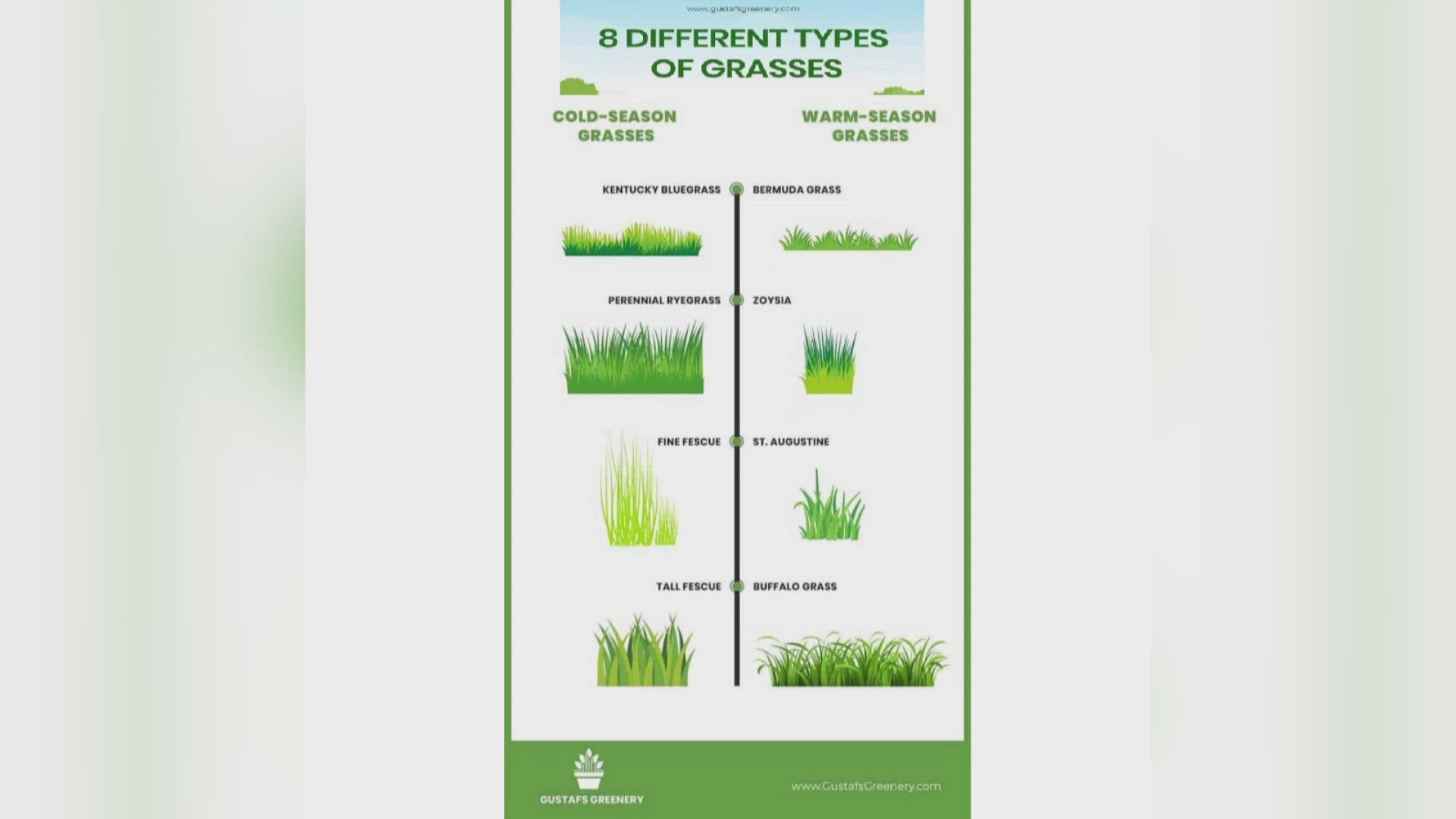![How Are Tornadoes Ranked?[ID=7527221] ID=7527221](http://bcdownload.gannett.edgesuite.net/wfmy/34300080001/201404/2134/34300080001_3450710303001_th-5345c40be4b0fb28a60398ef-672293879001.jpg?pubId=34300080001)
GREENSBORO, N.C. -- After a tornado strikes, homes are destroyed and lives are changed forever and we often look for answers about just how strong the tornado was that caused so much damage. While radar data can give meteorologists a rough idea of how strong the winds in a tornado may be there are no reliable methods of recording the tornadic winds other than manually planting weather instruments directly in the path of a tornado (very difficult and dangerous to do).
Instead, meteorologists rely on a set of wind estimates based on damage to rate tornadoes. Tornadoes are ranked on the Enhanced Fujita (EF) Scale which goes from EF-0 to EF-5.
After severe weather has cleared an area where a tornado has reportedly touched down, a storm analysis crew organized by the local National Weather Service will dispatch to observe the damage. Once they determine that the damage was in fact caused by a tornado they turn to a set of 28 damage indicators. These damage indicators consist of various structures and items such as small barns, single-wide mobile homes, apartments, condominiums, motels, hardwood trees, etc...
![28 Tornado Damage Indicators [ID=7526863]](http://moc-assets-prod.gannett-cdn.com/-mm-/33d97f8a03d5ea06baca0f7a30eca34c8bd87643/r=500x281/local/-/media/WFMY/WFMY/2014/04/09/1397086705000-2WTK-ANSWER.png)
Once the NWS Survey crew locate any of the 28 indicators they will reference 8 levels of damage that correspond to the estimated winds that would have caused that level of damage. For example, if a small barn suffers any type of visible damage then the wind speeds in the tornado would be expected to be around 62 mph. If there is any loss of wood then the wind speeds would be expected to be around 74 mph and so on. For all of the 28 indicators there are 8 levels of damage that can be assessed to help determine the estimated wind speeds of the tornado.
![8 Levels Of Tornado Damage [ID=7526913]](http://moc-assets-prod.gannett-cdn.com/-mm-/33d97f8a03d5ea06baca0f7a30eca34c8bd87643/r=500x281/local/-/media/WFMY/WFMY/2014/04/09/1397086766000-2WTK-ANSWER-2.png)
After the NWS Survey crew has combed through all of the damage caused by the tornado they are able to estimate the approximate maximum wind speeds within a tornado, along with tornado width and path length. This information will then included in a full report from the National Weather Service of the confirmed and now ranked tornado.



